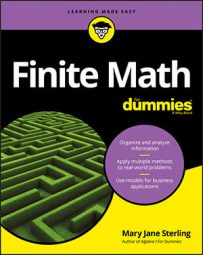Consider the compound statement
When constructing a truth table, you start with the basic p and q columns. Then you add a ~ q column followed by a column
Before you can perform the conjunction, ^, you need a ~ p column. Here’s a step-by-step procedure.
- Start with a basic p and q and then add ~ q.
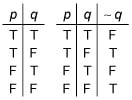
- When adding the
column, perform the disjunction on the first and third columns. Remember, with disjunctions, the statement is false only when both component statements are false.

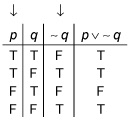
- Add the ~ p column.
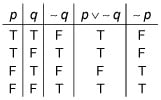
- Add the
column, which shows the conjunction of the fourth and fifth columns.

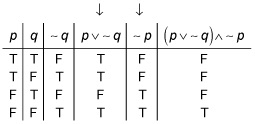
The conjunction is true only when the two component statements are true. This complex statement is only true when both original statements are false.

